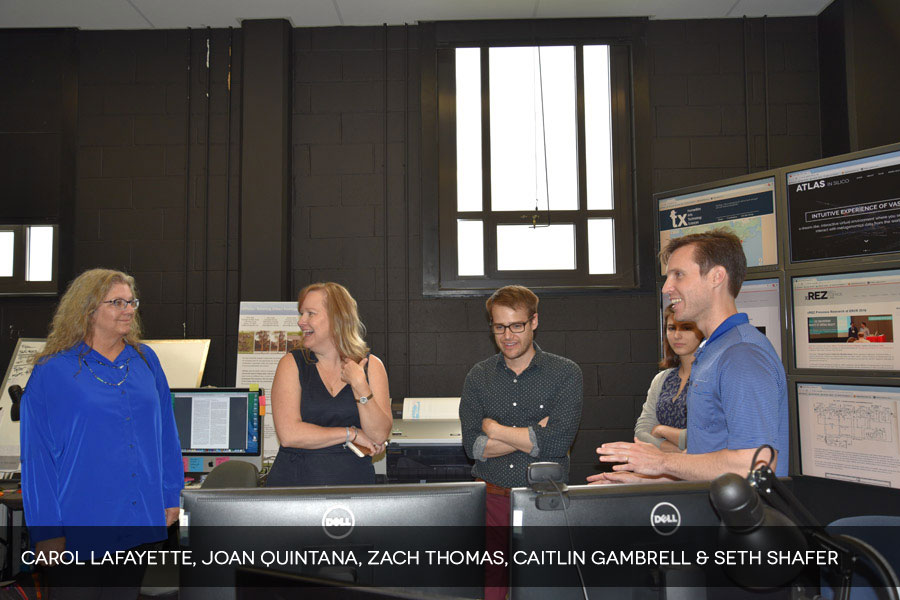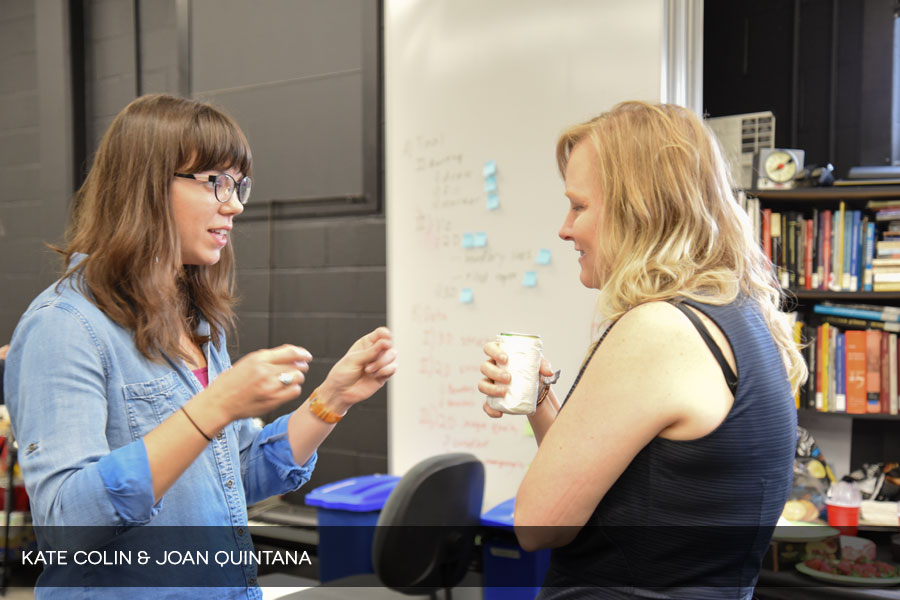On Mar. 30, 2016 the TxHATS (Humanities, Art, Technology, Science) network gathered in Denton, Tx to initiate conversations across disciplines and exchange new ideas. After a series of presentations of North Texas art + science projects, TxHATS members coalesced around free-forming discussion groups to whiteboard ideas and put solutions on the table.
The TxHATS working groups produced key insights into the art-science community and allowed them to tackle big questions. The discussion begins with the basics – a look at differences in the working practices of scientists and artists – and lands at the heart of issues many communities face today.
Collaboration: Back to the Basics
The struggle between the old and new, traditional and innovative approaches means true collaboration hinges on recognizing the value of each type of practice, each piece of the puzzle.
While interdisciplinary, multi-disciplinary, and cross-disciplinary are all valuable, too much focus on new modes carries a danger, says Roger Malina (UTD Art-Sci Lab, MIT Leonardo). Overemphasizing innovation risks forgetting the value inherent in practices like focused, repetitive ritual and disciplinary activity. “Interdisciplinary is a value, but so is disciplinary.”
The TxHATS discovered that actively engaging the inherent working practices of different disciplines can lend huge value to collaborations, increase participation, and amplify outcomes for vastly different disciplines. Art and science, for example.
“Scientists have to prove their conjecture,” says Scot Gresham-Lancaster (UTD). “They have to set up an experiment to prove the problem they’re trying to solve. It’s very exact. They have to use exact procedures that relate back to other experiments of that type. An artist needs to go completely mad and make everybody go, ‘Whoa, what was that?!’ That’s a completely different problem.”
Interdisciplinary is a value, but so is disciplinary.
One approach is for collaborations to embrace multiple outcomes, says JD Talasek (DASER, cpnas.org). Shedding the linear thinking that the whole team must work toward one goal can often free up energy for the same team to produce a variety of valuable outcomes.
Ruth West notes that “the heterogeneity is incredibly important to this kind of activity. If you try and value it through clumping things together, kind of binning things as you might do to value things in other disciplines, then you lose a lot of what the real value is. And so how do you do that within a societal context?”
Interdisciplinarity is a risk-taking activity for collaborators, especially in environments where failure is not an option, such as academic researchers whose careers depend on productive research outcomes. But sometimes we can learn more from our failures than what they produce, so the TxHATS asked each other if the academic structure can be changed so that universities are a safe place to fail and therefore learn.
Jose M. Quintana shared an insight from Silicon Valley, where failure is more acceptable, but the idea there is to fail quickly so the next iteration can be even better. However, Silicon Valley might not be a good example as some pointed out: its career culture is riddled with exclusionism of various types, and its model has failed elsewhere. As Roger Malina noted, Silicon Valley might just be “an historical accident of location, institutions, and people.”
TxHATS Discover Ideas through Rich Community
The TxHATS group discussions facilitate a flow of ideas that attendees can take home with them, sending ripples of interdisciplinary influence through teams trying to tackle tough questions in their communities.
Rendezvous, accidents of people and locations are at the center of the TxHATS activities, and while new collaborations formed at the March meeting, those formed at past meetings are celebrating their growth. Like the connection between AdventGX (adventgx.agxdev.com) and SEAD Network (http://sead.viz.tamu.edu/) in Bryan, TX for example. Paying attention to those who have paved the way before you is also a major part of the program, says Ruth West (xREZ Lab), and Carol Lafayette (SEAD, TAMU) offered some advice to those just starting out: “It’s finding the people who are already doing what you want to do and connecting with them.”
How? Ask Big Questions!
The TxHATS talked about understanding their craft, assessing its value, and paying homage to practitioners, relationships, and a bright future of increased activity with new approaches to interdisciplinary collaboration. They also tackled a range of problems worth discussing. Like how to prioritize preservation of digital media that is at risk to be lost and how different groups involved in the process of preservation will view the process differently. How can the modern shift toward the combination of technology and science to make powerful art work be defined? asked Spencer Keralis (UNT DiSCo).
How can the humanities enter into the science and engineering discussion in a way that creates constructive interference?
TxHATS members and AdventGX innovators Joan & Jose Quintana are asking questions like how can a technology incubator combined with an interdisciplinary, science visualization gallery and engagement among individuals working on projects and investors bring a richness of life to a community?
Community activity is a rich field of discovery, whether in local theaters or citizen science activities. Art and science asks how and why people are re-using spaces in cities and in rural areas, with a shift to industrial activity occurring outside city centers. Are people fragmented by different kinds of industrial development or resource extraction? How do people facing invisible pollution behave, and how do neighbors with fewer worries empathize with those who suffer? What if protest is considered a design problem and involving people is a matter of reformatting messages to be palatable?
How can involving people in works of public art bring the community together to elicit change, and what is the experience of the artist navigating a community-centered practice in addition to gallery space? is a question for Janeil Engelstad. When scientists and artists get together, what do artists need? What do scientists need?
Creating Constructive Interference
Life on the internet also brings up many of its own unique questions. How can researchers tap into communities of citizens who are now producers of self-published data that is shared through networks online? How do algorithms that sort information online help or limit access to information? How do people deal with “meeting online” as opposed to face-to-face conversations? And what about virtual reality experiences – are they able to be truly social or are we a long way from true social VR? What is the editorial nature of virtual reality journalism, and does the trauma of watching footage of an unjust beating or a video package of the outcomes of humanitarian efforts affect the audience in different ways than traditional approaches? How can those differences be quantified?
Does the objectivity/subjectivity debate still exist in journalism, and what about its role in science publication? Should researchers stand as moral leaders or community authorities or stick to the facts? Are facts constructed or are they representations of the world around us? How does art + science combine moral considerations with factual ones?
Other HATS discussions tackled “the conundrum of sonification,” turning data into sound that makes sense to the listener. But if sounds assigned to data points for the purpose of sonification have no underlying perceptual theoretical system, the result presents “challenges in intelligibility in terms of interpretation” by the listener, explained Zach Wallmark. That means the initiated ear can “hear” the data, but to many it just sounds like noise. More perceptually-intuitive approaches informed by multiple disciplinary research areas may offer insight into sonification problem.
The TxHATS recognized that in order to make a difference, the questions they ask must be bold. As noted by Sally Weber, there is a creative beauty in not knowing what answers you are looking for and searching in the dark where you are open to all kinds of solutions.
Learn more about the TxHATS, join the listserve at: TexasHATS.org.
Learn more about the National Academy of Sciences’ initiative to quantify collaboration: Art + Science, On the Agenda
News@xREZ April 2016



